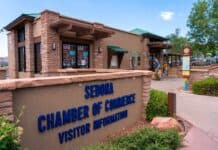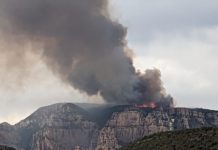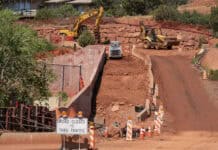First it was the U.S. Forest Service’s turn to discuss a 24-year access issue on private property near Poco Diablo Resort. Next up, it’s the Sedona City Council’s turn to revisit the topic.
Council has set aside two hours on Tuesday, Sept. 12 to discuss 27 acres purchased in 1993 by Bruce Tobias and Carol and Robert Flynn. Since the purchase, the property has been landlocked with access being denied by an adjacent development.
“The purpose of the agenda item is to present this issue to the current City Council, discuss the USFS proposed alternatives and get their comments on those and potentially discuss whether or not there are any other possible options outside of one of the accesses through USFS property,” Assistant City Manager Karen Osburn said. “If so, does the city have a role in pursuing any of those other options?”
This issue has been discussed by council six times since 2007 — the last time being in 2011. No current council members were serving at that time.
Throughout the city’s involvement with this issue, council has consistently encouraged the land owners and the Oak Creek Cliffs Homeowner’s Association to work out an access arrangement using the existing private crossing and private road at the Oak Creek Cliffs Drive alignment, a city document states.
This included council making a formal request to that effect in 2007. The Oak Creek Cliffs Homeowner’s Association subsequently provided a letter indicating they would not reconsider granting access through its properties.
In 2008, council considered condemnation to provide access through the Oak Creek Cliffs Drive alignment. Council ultimately decided not to pursue condemnation at that time to allow the environmental assessment process to play out. The city document states that should council now elect to consider using condemnation to acquire access through Oak Creek Cliffs Drive alignment, additional analysis and legal review would be necessary.
This would be a high-cost option and it is unclear whether or not the land owner would be willing to pay for this, it states. Consideration would also need to be given to the appropriateness of using condemnation for this purpose and whether or not it constitutes a public necessity in accordance with the use of eminent domain.
The USFS, which is in the midst of an environmental assessment, is proposing three access alternatives. They are:
n A road approximately 0.85 miles to the property and would start from Oak Creek Cliffs Drive. The route would include a two-lane, 24-foot-wide bridge approximately 450 feet long and 60 feet high that would cross Oak Creek just above the upper end of the “swimming hole,” and cross one ephemeral natural drainage tributary to Oak Creek.
By comparison, Midgley Bridge is 375 feet long.
n A road approximately a half-mile to the subject property. It would cross Oak Creek upstream from the above alternative and cross one ephemeral natural drainage tributary to Oak Creek. A 24-foot-wide bridge about 650 feet long and 80 feet high would cross Oak Creek downstream from another informal swimming hole.
n An access road, 1.4 miles long plus 1,850 feet of reconstructed Chavez Ranch Road, to the private property starting from the Chavez Ranch Road. It would cross a total of approximately nine small ephemeral natural drainages and washes that are tributary to Oak Creek.
In the end, the USFS will have the final say on which alternative is used. Access to the property — including any road or bridge — will be paid for and maintained by Tobias and the Flynns.
A USFS document states that when Tobias and the Flynns acquired the property they contacted the Forest Service to inquire about obtaining access to their land. The parcel owners were advised that they should first try to obtain access over the private property to the east of their parcel.
The parcel owners attempted to negotiate for access through non-federal land to the parcel several times over the years. When negotiations failed, the parcel owners sued to condemn a private way of necessity in Coconino County Superior Court.
The state court denied the parcel owners motion for failing to carry their burden of proving reasonable necessity for the easement because the parcel owners might obtain access over National Forest land.
Subsequently, the report states suit was filed by Tobias and the Flynns in the U.S. District Court for the District of Arizona. In 2002, the court issued in favor of the plaintiffs, finding that an easement by necessity exists.




















